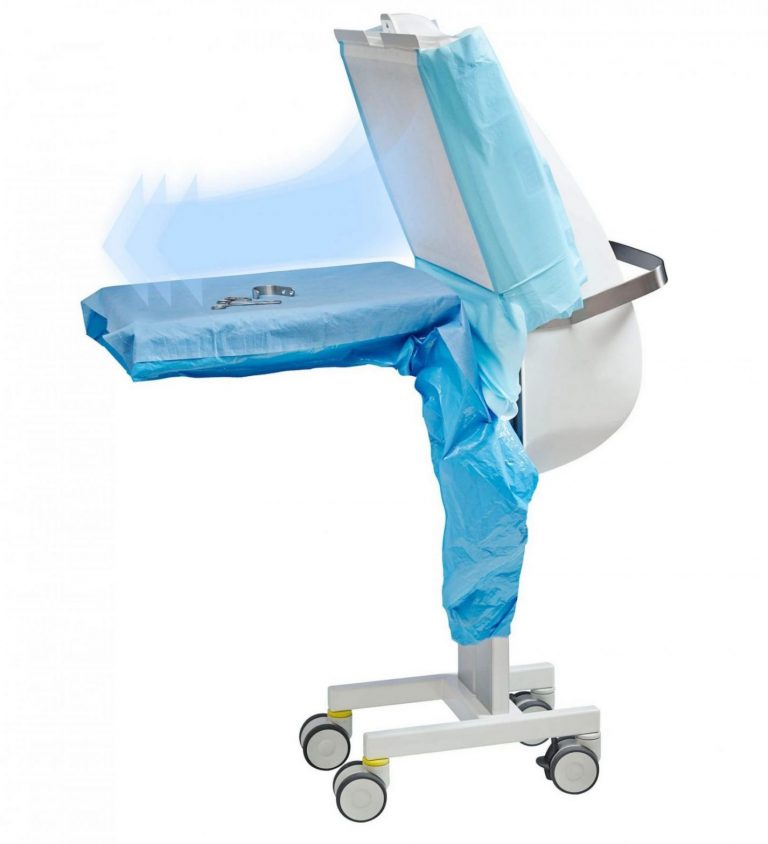
Operating theatre ventilation standards for cardiac surgery
Prevent wound infections following open heart surgery
The seriousness of postoperative infections and the increased susceptibility of patients undergoing cardiac surgery increase the demands on the operating theatre asepsis to prevent even low infecting doses of bacteria from reaching the wound. Due to large wound area, long operation time combined with a high number of persons present in an operating theatre for cardicac surgery , increased cleanliness of the air is essential to avoid deep sternal wound infection after cardiac surgery. 1-3% of patients develop deep sternal wound infection with mediastinis; an infection that can be fatal. The vein harvest site is the most common site for wound infections after cardiac surgery and these infections result in significant patient morbidity and increases health-care costs.
The most important measure against surgical site infections is to consistently maintain the highest hygiene standards during surgery especially during heart surgery or the implantation of implants. To minimise the intraoperative transmission of bacteria, laminar airflow ceilings are used in many hospitals to fend off bacteria. However, in the vast majority of operating theatres the existing supply-air ceilings are far too small to also cover the instrument preparation area. A sterile operating theatre does not exist- there are only sterile zones in the O.R. directly below the air outlet.
Various studies have made it very clear that instruments in an conventional operating room ( ISO 7) and instruments prepared outside the air supply ceiling of a laminar air flow system (ISO 5) will become contaminated after a short time. The longer the operation lasts, the higher will be the risk of instrument contamination and thus of infection.(Thomas Benen1, Frank Wille1*, Lüder Clausdorff2, The influence of different ventilation systems on microbiological instrument cleanliness Hyg Med 2013; 38-4).
Many people in the general public think of ORs as ultra clean, even sterile, environments. For anyone working in ORs, it is clear that this view is far from the truth. Although modern ORs have strict measures to reduce contamination, the OR environment becomes contaminated with every person entering the operating room. The more people are present in an operating room the higher is the contamination with pathogens that cause infections including SSIs. Especially implant surgery and eye surgery need a very aseptic environment as already a few pathogens can cause infections which are devastating and very expensive to treat.
Despite surgical clothing, every person releases around 200 to 500 bacteria per minute to the environment. Hyg + Med, 12: 205-210 (1987).
Operio and steristay: the world’s first instrument tables with integrated HEPA filter: instruments and implants can be prepared under aseptic cleanroom conditions
– the first instrument table that maintain instruments and implants sterile during surgery.
Every surgeon opens implants only at the very last minute before implantation to keep them sterile in order to avoid infections – the necessary surgical instruments, on the other hand, are left unprotected on the instrument table for a long time, where they become contaminated and might cause an infection.
The Steristay Sterile Instrument Table and Operio Mobile Laminar Air Flow unit filter the ambient air through a highly purifying 14 Hepa filter with an efficiency of over 99.995%, which eliminates bacteria and micro-organisms (including coronavirus covid 19) by over 99.9%!
Most instruments are prepared outside the flow of the ceiling air supply and become contaminated even before the operation.
The Operio unit and Steristay Instrument Table ensure that instruments and implants remain sterile both during preparation and throughout the surgical procedure.
Cost of a deep sternal wound infection in cardiac surgery
Although the incidence of sternal wound infections has decreased they continue to be associated with increased morbidity and mortality, and decreased long-term life expectancy.1-3 They prolong hospital length of stay and can raise hospital costs by as much as US$62,000. (Braxton JH, Marrin CA, McGrath PD, Ross CS, Morton JR, Norotsky M, et al. Mediastinitis and long-term survival after coronary artery bypass graft surgery. Ann Thorac Surg. 2000;70:2004-7.)
The average incidence rate of Deep Sternal Wound Infections (DSWI) ranges from 0.5% to 6% in the immediate postoperative period and ranges from 0,3% to 7.3% in a 90 day follow up period. (Rupprecht L, Schmid C. Deep Sternal Wound Complications: An Overview of Old and New Therapeutic Options. Open Journal of Cardiovascular Surgery 2013:6)
Benefits:
Can be used immediately without any structural modifications
No turbulence with existing supply-air ceilings
Protection against instrument and implant contamination – especially during long operations, implants and transplants
No cold air or draughts. It is also very quiet (comparable to a projector).
Related products

Operio portable laminar air flow
TOUL Operio focused laminar air flow is a device that can be used in any environment: from operating rooms to clinics.
Go to product
Steristay instrument table with hepa filter
TOUL Steristay– Focused laminar flow with built-in backtable is ideal to keep the surgical instruments sterile.
Go to product
 it
it en
en fr
fr de
de








